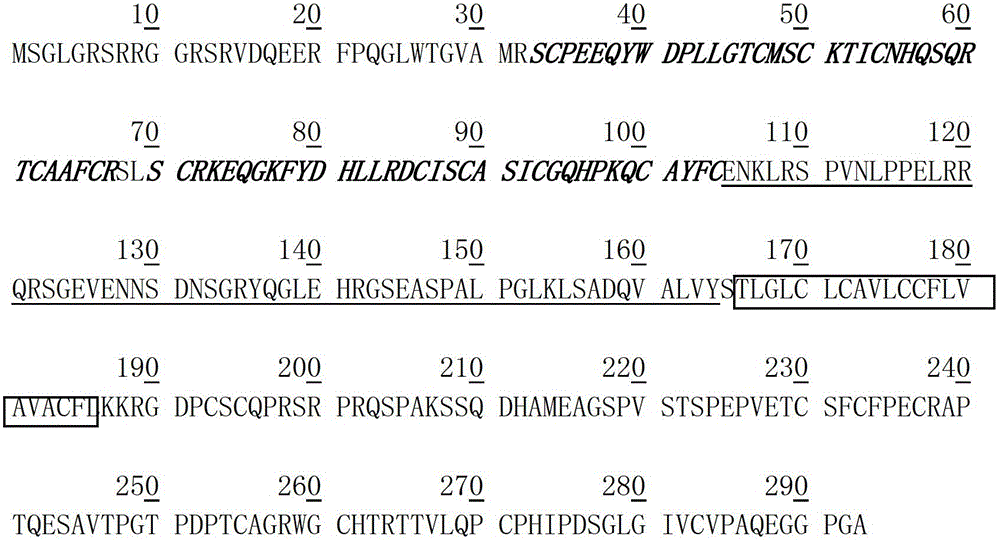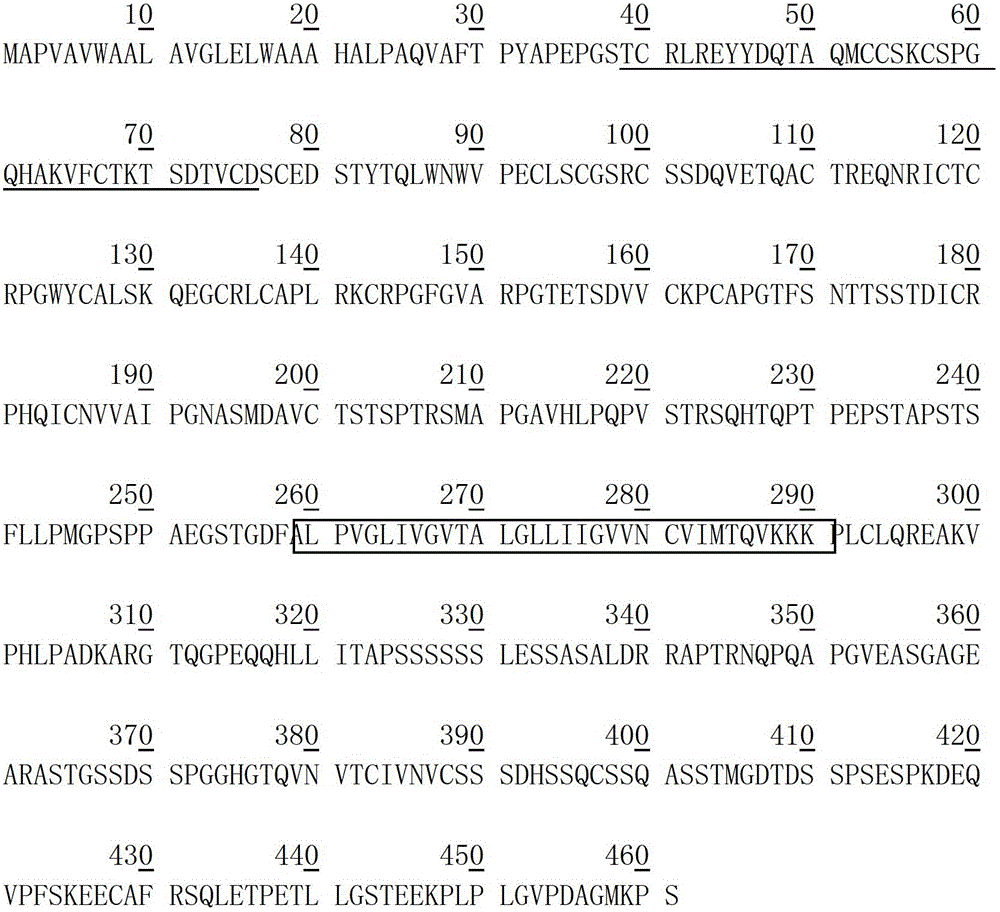Fusion protein inhibiting the formation of taci-baff complex and its preparation method and use
A fusion protein, application technology, applied in the direction of peptide/protein components, DNA/RNA fragments, cells modified by introducing foreign genetic material, etc., can solve the impact of humoral immune response, autoreactive B cell autoimmune tolerance destruction, etc. question
- Summary
- Abstract
- Description
- Claims
- Application Information
AI Technical Summary
Problems solved by technology
Method used
Image
Examples
Embodiment 1
[0114] Construction of Fusion Protein A Expression Plasmid
[0115] The fusion protein A precursor (Figure 4) is composed of the following three-part fragments from the N-terminal to the C-terminal, and the specific amino acid sequence is as follows:
[0116] Fragment 1. The amino acid sequence of TNF-R2 is from position 1 to position 76, including the first cysteine-rich region ( figure 2 ).
[0117] Fragment 2. The amino acid sequence of TACI is from the 30th to the 119th, containing two cysteine-rich regions and part of the main stem sequence ( figure 1 ).
[0118] Fragment 3. The human γ1 amino acid sequence is from 216th to 447th, containing a hinge region and two CH regions ( image 3 ).
[0119] Synthesis of fragment 1 cDNA. The PCR template is human cDNA prepared by conventional methods. The primer AAGCTTGCGGCCGCGAGCTCGGATCCACT (SEQ ID NO.: 6) at the 5' end is the sequence of the plasmid vector. For cloning into the pT vector, a Not I restriction site was in...
Embodiment 2
[0124] Construction of Fusion Protein B Expression Plasmid
[0125] The fusion protein B precursor (Figure 4) is composed of the following three parts from the N-terminal to the C-terminal, and the specific amino acid sequence is as follows:
[0126] Fragment 1. The human CD33 protein signal peptide contains the first 16 amino acids at the N-terminus.
[0127] Fragment 2. The TACI amino acid sequence is from 30th to 119th, containing two cysteine-rich regions and part of the main stem sequence ( figure 1 ).
[0128] Fragment 3. The amino acid sequence of human IgG1 is from 216th to 447th, containing a hinge region and two CH regions ( image 3 ).
[0129] The recombinant gene encoding fusion protein B was constructed by overlapping polymerase chain reaction (PCR). The template for the PCR reaction was human cDNA prepared by a conventional method. Polymerase chain reaction (PCR) was carried out with PlantiumSuperMix of Invitrogen Company, according to the manufacturer's i...
Embodiment 3
[0136] Establishment of fusion protein expression cell lines
[0137] In this example, a stable and high-efficiency protein expression CHO DG44 cell line was established by means of stable transfection and gene amplification. The cloned CHO DG44 cells were cultured in suspension in serum-free, animal protein-free medium.
[0138] The original CHO DG44 cells were obtained from Invitrogen Company, and the methods of cell culture and subculture were referred to the company's operation manual. Non-transfected cells were cultured in suspension in CD DG44 medium containing 8mM Glutamine and 0.18% Fluronic F-18.
[0139] A large number of expression plasmids encoding the fusion protein were prepared using Qiagen's kit. In order to prevent the plasmid from being contaminated by bacteria, the plasmid was purified once by alcohol precipitation. Before gene transfection, CD DG44 cells were passed for three generations before transfection. When the cell density reaches 1×10 6 / ml, tr...
PUM
| Property | Measurement | Unit |
|---|---|---|
| molecular weight | aaaaa | aaaaa |
Abstract
Description
Claims
Application Information
 Login to View More
Login to View More - R&D Engineer
- R&D Manager
- IP Professional
- Industry Leading Data Capabilities
- Powerful AI technology
- Patent DNA Extraction
Browse by: Latest US Patents, China's latest patents, Technical Efficacy Thesaurus, Application Domain, Technology Topic, Popular Technical Reports.
© 2024 PatSnap. All rights reserved.Legal|Privacy policy|Modern Slavery Act Transparency Statement|Sitemap|About US| Contact US: help@patsnap.com










